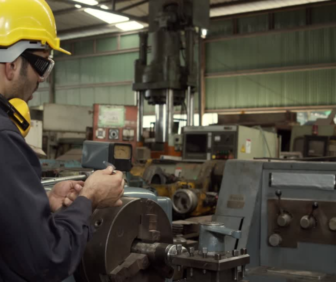Policymakers in both Lansing and Washington seem hellbent on slashing the safety net. In part, ![]() they argue, because a too generous safety net gives folks an incentive not to work. The evidence suggests the opposite.
they argue, because a too generous safety net gives folks an incentive not to work. The evidence suggests the opposite.
As we detail in our Minnesota policy case study, Minnesota has by far the highest proportion of adults who work in the Great Lakes with a safety net, across the board, far more generous than Michigan. In 2015 Minnesota was 3rd in the nation in the proportion of those 16 and older who worked. Michigan was 40th. If the same proportion of Michiganders worked as Minnesotans there would have been 800,000 more Michiganders working.
A far better approach than slashing the safety net, and hope that will create incentives for folks to take any job, is to design, in the words of former Massachusetts Governor William Weld, a safety net that acts as a trampoline rather than a snare. Recognize that many folks have real barriers to employment that they need help with. And recognize that many jobs do not provide adequate income to pay even for the basic necessities.
We lay out the details of what a work-based safety net that acts as a trampoline might look like in our shared prosperity policy report. It’s organized around:
- Helping Michiganders get family supporting employment through a combination of income supports and comprehensive and customized case management. Services could include housing, childcare, transportation, substance abuse support, mental heath, job training, financial education, etc. Services and income support continue beyond a first job.
- Using TANF (Temporary Assistance to Needy Families) funding, as it was intended, to help those out of work or underemployed get family supporting jobs. Michigan has been a leader in getting out of the business of providing cash grants or services designed to help people get to self-sufficiency.
- Augmenting wages and benefits through some combination of employer mandates and/or a strengthened safety net.
- Reforming the criminal justice system: To achieve fewer imprisoned, shorter time spent in prison and barriers to work removed after release.
The case for an expanded safety net is even stronger when you consider how smarter and smarter machines are likely to change the nature of work. Quite simply jobs and occupations are less stable today than yesterday and even less stable tomorrow than today. And more and more work is almost certainly going to be contingent.
As U.S. Senator Ben Sasse succinctly describes it: “the transformation in the economy and the nature of work from stable lifelong jobs to unstable, occasional, part time, flex jobs where everyone is going to have to become a lifelong learner.
The Brookings Institution in an article entitled Gouging the safety net is especially untimely now provides an overview of the work being done on the left and right to expand the safety net to help households deal with an economy where many of us are going to need to find not just a new job but a different line of work. Many of us multiple times as machine learning constantly redefines the work that humans do.
Brookings writes:
For all of the GOP’s continuing hostility towards the welfare state, a new view of the relationship between the economy and social programs has been gaining strength, not just on the left but also in smart precincts of center-right and libertarian thought.
In these quarters, the old doctrine that the safety net is always and everywhere antithetical to growth is beginning to be reassessed. Dawning instead, as we have observed elsewhere, is a recognition that a high-tech economy fueled by disruptive innovation actually requires a stronger safety net, if only to maintain the public’s tolerance for its inherent dislocations.
Prompting the new thinking is a litany of findings about how the “disruptive innovation” that drives a dynamic market system tends also to destabilize industries and displace workers. From the replacement of coal with natural gas in the power industry (with stark ramifications for coal miners) to all encompassing megatrends such as digitalization, globalization, automation,
and the spread of “contingent” work, today’s economic dislocations have brought both growth and dislocation.Dislocation, in this regard, is no longer an incidental “bug” of the system but a “feature”—one that is generating widespread flux in the labor market.
The New York Times in an article entitled The Robots Are Coming, and Sweden is Fine explores how the very generous Swedish safety net makes Swedes more accepting of and better prepared to prosper in an economy characterized by constant job disruption. They write:
Americans tend to dismiss Nordic countries as a realm of nanny-state-worshiping socialists in contrast to the swashbuckling capitalists who rule in places like Silicon Valley. But Sweden presents the possibility that, in an age of automation, innovation may be best advanced by maintaining ample cushions against failure.
… Eighty percent of Swedes express positive views about robots and artificial intelligence, according to a survey this year by the European Commission. By contrast, a survey by the Pew Research Center found that 72 percent of Americans were “worried” about a future in which robots and computers substitute for humans.
In the United States, where most people depend on employers for health insurance, losing a job can trigger a descent to catastrophic depths. It makes workers reluctant to leave jobs to forge potentially more lucrative careers. It makes unions inclined to protect jobs above all else.
Michigan Future’s core belief, since we were founded more than a quarter of a century ago, is that the individuals and communities that will be the most prosperous in an economy being transformed are those who align with––rather than resist––these megaforces. It’s clear to us that part of that alignment is an expanded safety net designed to help folks thrive in a world in which stable full time employment for an employer, or within an industry, is going to be less and less common for most of us.







